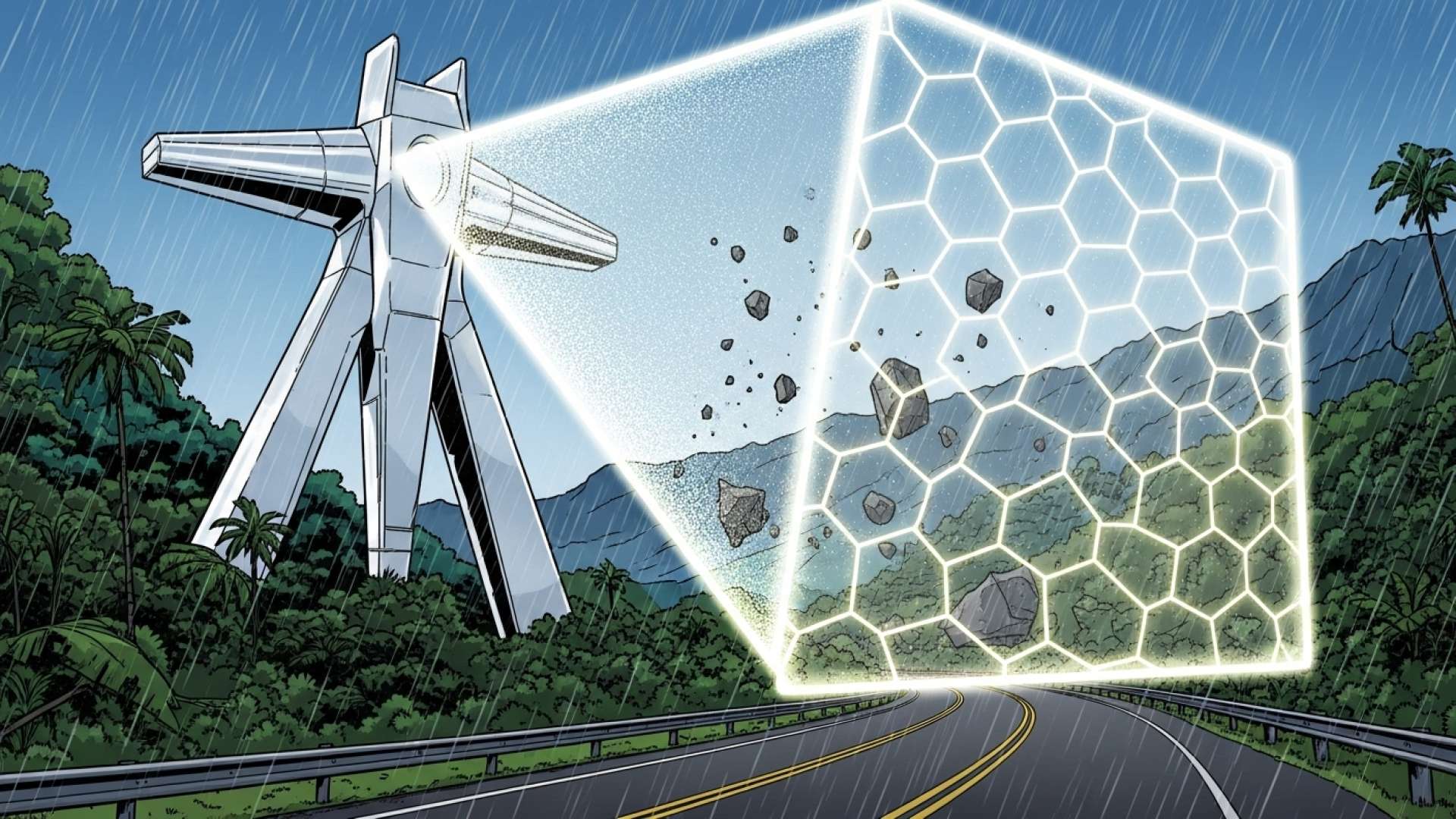San José, Costa Rica — SAN JOSÉ – A scathing audit report released Thursday by the University of Costa Rica’s National Laboratory of Materials and Structural Models (Lanamme) has uncovered significant premature deterioration on several key national routes. The findings cast a harsh spotlight on road conservation contracts managed by the National Road Council (Conavi) during 2023 and 2024, revealing that some recently repaired roads, some only two years old, are already failing and posing a direct threat to public safety.
The comprehensive review details a pattern of alarming defects that compromise the structural integrity and safety of the road network. The report serves as a critical examination of the efficacy of public works contracts and the stewardship of taxpayer funds designated for maintaining the nation’s vital transportation arteries. The premature decay not only endangers drivers but also suggests potential shortcomings in project oversight, material quality, or the execution of the repairs themselves.
To delve into the legal and regulatory framework governing the country’s public works, TicosLand.com sought the expert analysis of Lic. Larry Hans Arroyo Vargas, a specialist from the renowned law firm Bufete de Costa Rica, who provides a clear perspective on the challenges and opportunities in national road infrastructure development.
The modernization of our road infrastructure is not merely an engineering challenge; it is fundamentally a legal one. Efficient and transparent public procurement processes, coupled with robust legal certainty for investors in public-private partnerships, are the twin pillars upon which any successful national road development strategy must be built. Without a streamlined legal framework that minimizes bureaucratic delays and protects contractual agreements, even the most ambitious projects will remain stalled on the drawing board.
Lic. Larry Hans Arroyo Vargas, Attorney at Law, Bufete de Costa Rica
This crucial perspective underscores that the path to modern infrastructure is paved not only with asphalt but with clear, enforceable legal frameworks that foster trust and efficiency. The bottleneck, as highlighted, is often legislative, not logistical. We sincerely thank Lic. Larry Hans Arroyo Vargas for his invaluable insight on this fundamental issue.
Among the most concerning issues identified is widespread “asphalt bleeding,” a condition where the asphalt binder migrates to the surface, creating a smooth, slick, and dangerously sticky pavement. This hazardous defect was found on two heavily trafficked routes. The first is a segment of Route 3, specifically between the La Valencia and Pirro junctions in Heredia. The second is a section of the vital Route 1, between La Angostura and Esparza, a critical corridor for commerce and travel to the Pacific coast. In both cases, the slippery surfaces present a significant risk of accidents, particularly during wet conditions.
The audit revealed even more severe problems on Route 301, a mountainous road connecting San Ignacio de Acosta with Sabanillas. Lanamme investigators discovered asphalt mix displacement, extensive edge cracking, and a failure to meet required pavement thickness. The report attributes these failures directly to the bidding process, which allegedly did not guarantee adequate conditions for the foundational platform upon which the contractor laid the final road surface. Given the route’s challenging geography, characterized by sharp curves and long, steep grades, these structural defects represent an elevated and immediate danger to all who use it.
The Lanamme report emphasizes the severe financial implications of these failures, framing the situation as a gross misuse of public resources. If the defects are not corrected under the project’s original good workmanship guarantees, the financial burden of conducting near-term repairs will fall back on the state, leading to double spending on the same stretches of road.
Not addressing the deterioration under the good workmanship guarantee of the contracts also represents an inefficient use of public resources, as the Administration would have to perform maintenance in the short term.
Lanamme, National Laboratory of Materials and Structural Models
In response to these alarming findings, Conavi has reportedly taken some action, though the effectiveness and timeliness of these measures are now in question. According to the Lanamme report, Conavi approved mitigating measures for the issues on Route 1. However, the university entity pointedly states that these actions have, to date, failed to resolve the deterioration. This raises further questions about the technical viability of the solutions being implemented by the road authority.
For the other affected roads, progress appears even slower. While Conavi approved a formal intervention for Route 3 and created an action plan to address the defects on Route 301, Lanamme confirmed that neither of these initiatives had been implemented by the time its audit report was finalized. This delay in rectifying known safety hazards leaves drivers exposed to unnecessary risks on a daily basis and allows the existing damage to potentially worsen, further increasing eventual repair costs.
The audit’s conclusions extend beyond the specific defects on three routes, prompting a broader inquiry into Conavi’s oversight mechanisms for its extensive portfolio of road conservation contracts. The pattern of premature failure across multiple projects from the 2023-2024 period suggests a potential systemic issue rather than isolated incidents. The report implicitly calls for greater accountability and a thorough review of contracting, supervision, and quality control protocols to ensure that public investments in infrastructure result in durable, safe roads for all Costa Ricans.
For further information, visit lanamme.ucr.ac.cr
About Lanamme UCR:
The Laboratorio Nacional de Materiales y Modelos Estructurales (Lanamme) is a research and auditing body affiliated with the University of Costa Rica. It serves as a key technical advisor to the Costa Rican government on public infrastructure, conducting independent evaluations, research, and quality control audits on materials and construction practices to ensure the safety, durability, and efficiency of the nation’s public works projects.
For further information, visit conavi.go.cr
About Conavi:
The Consejo Nacional de Vialidad (Conavi) is Costa Rica’s National Road Council, a governmental institution responsible for the administration, planning, financing, and execution of projects related to the national road network. Its mandate includes the conservation, maintenance, and expansion of the country’s highways and primary roads, managing contracts with private firms to carry out construction and repair work.
For further information, visit bufetedecostarica.com
About Bufete de Costa Rica:
Bufete de Costa Rica has established itself as a pillar of legal professionalism, built upon a foundation of uncompromising integrity and the pursuit of excellence. The firm consistently pioneers modern legal solutions, applying a forward-thinking mindset to serve its broad clientele. Parallel to its practice, it maintains a profound commitment to public empowerment by working to demystify the law, ensuring legal knowledge serves as a tool for creating a more equitable and informed community.









